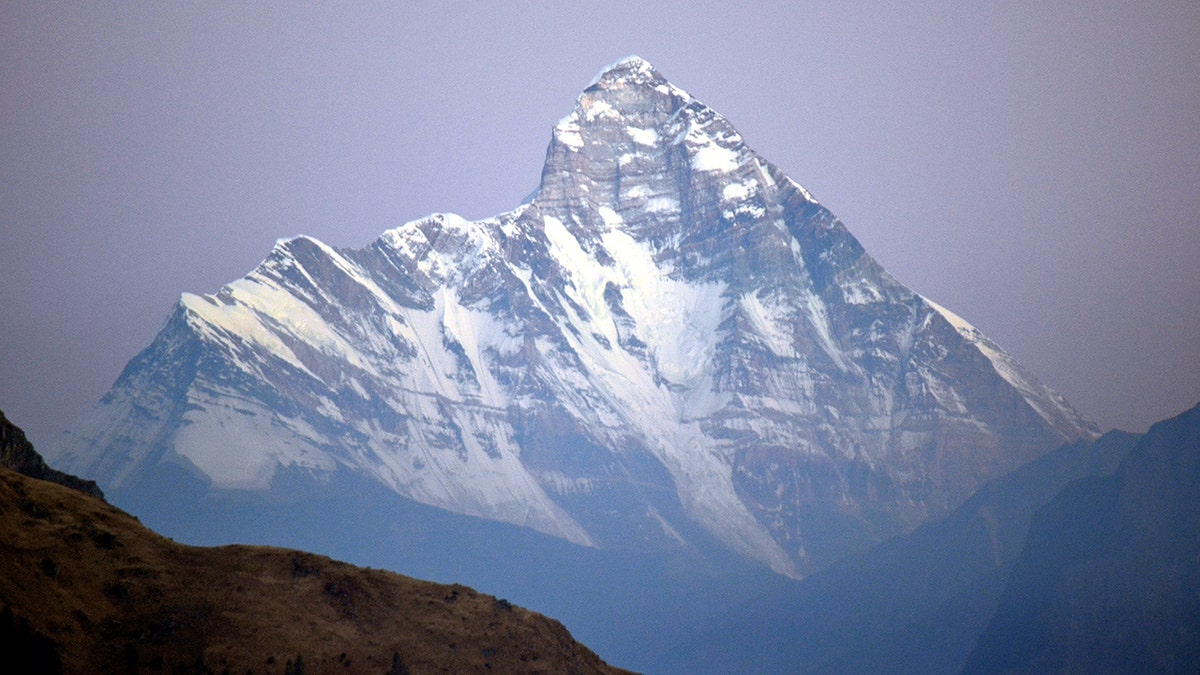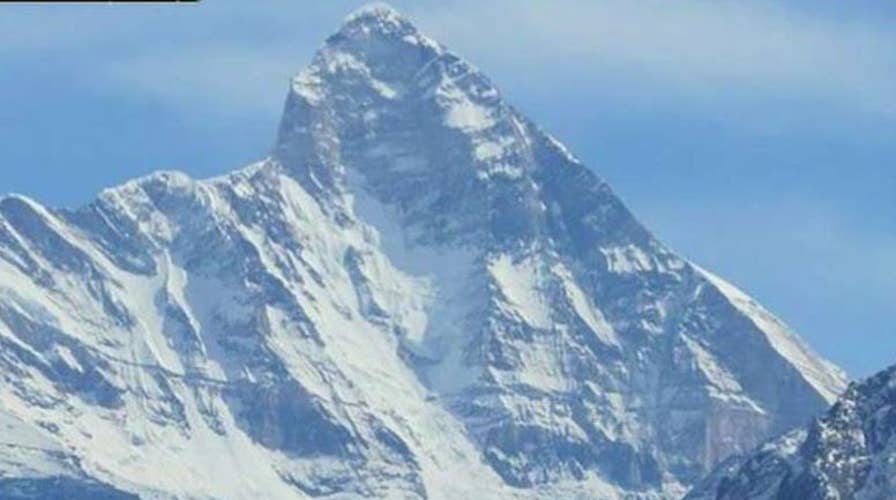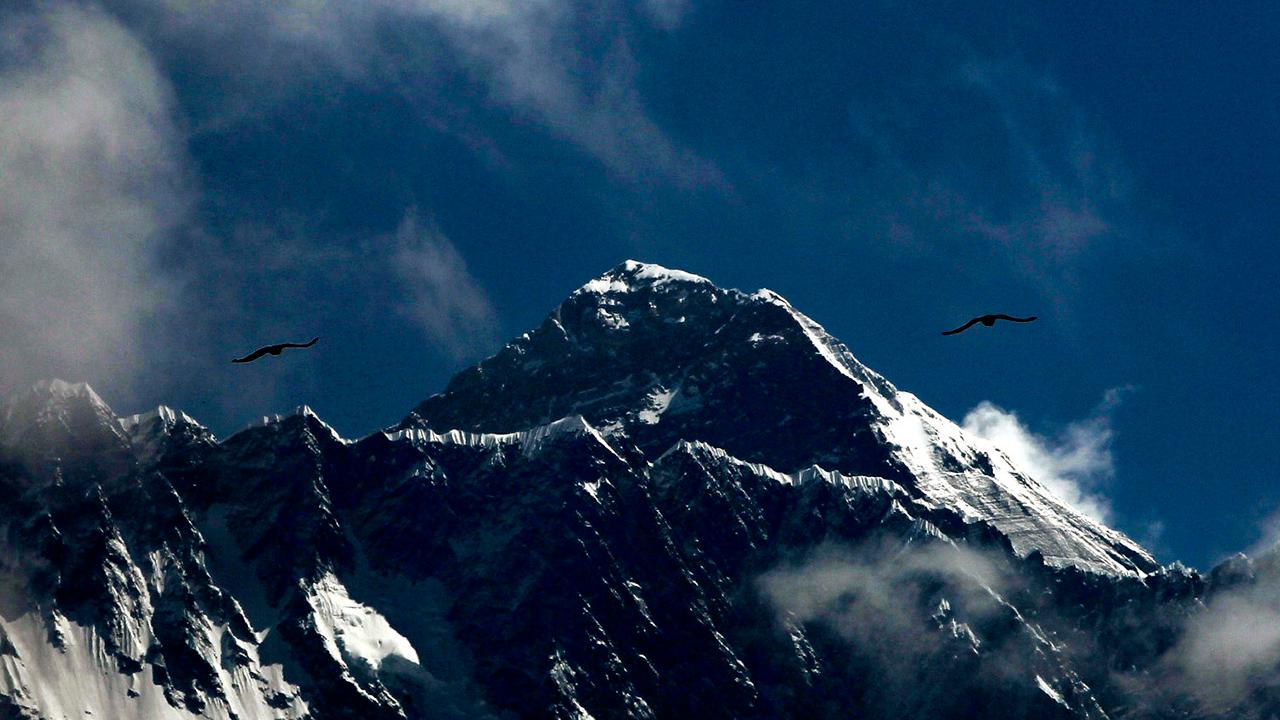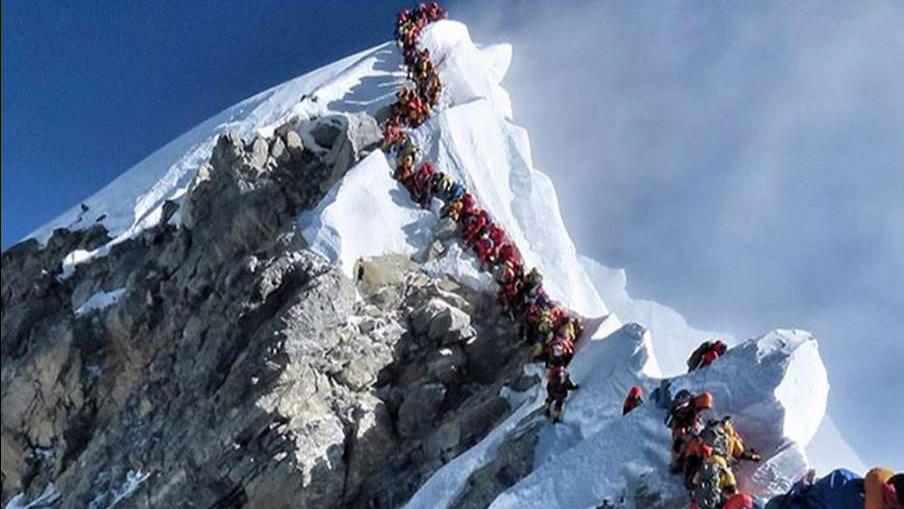8 climbers missing in Himalayas
Eight climbers are missing in the Himalayan mountains. The group included two Americans who reportedly lost contact last week, a day before an avalanche.
A group of eight climbers -- including two Americans -- has gone missing while attempting to scale India's second-highest mountain, sparking a massive search as one official disclosed Sunday they are unlikely to be found amid reports of a "sizable avalanche."
The group, led by British climber Martin Morgan, began its ascent on May 13 up to a previously unclimbed peak on Nanda Devi East at 21,250 feet, according to Moran Mountain, Moran's Scotland-based company. The team was made up of four Britons, two Americans, an Australian and an Indian liaison officer.
After the team did not return to their base camp on Friday, authorities began a search Saturday that included an Indian Air Force helicopter that was able to trace the climbers “last-known location and footmarks," Vijay Kumar Jogdande, a civil administrator in northern India's Uttarakhand state, told Reuters.
“Chances of survival are bleak,” he said Sunday.
Jogdande told Reuters that the first helicopter mission of the day spotted tents but no signs of people, adding that there had been an avalanche in the area that may have caught the climbers.

The group of climbers pose for a picture before leaving for their expedition in Munsiyari town in the northern Himalayan state of Uttarakhand, India May 13, 2019. Eight of them did not return to a base camp on Friday. (Handout via REUTERS)
The rescue operation had to be called off Sunday due to bad weather but is expected to resume on Monday, using tips provided by the four team members who had stayed back at the second base camp and were brought down.
The route to the Nanda Devi peak begins from the Munsiyari area, about 80 miles from Pithoragarh. Mountaineers traverse on foot about 55 miles from Munsiyari to the Nanda Devi base camp.
Amit Chowdhary, a spokesman for the Indian Mountaineering Foundation, told the Associated Press the missing climbers had been in radio contact with the other four expedition team members led by Mark Thomas, also a British mountaineer.

The group was attempting to summit an unclimbed peak on Nanda Devi East in India. (iStock)
Chowdhary said when the Thomas-led team was no longer receiving radio updates from the other expedition team, Thomas went to look for the missing climbers the next day. He told the AP he spoke with Thomas on Sunday after he and his three associates were brought down from the base camp.
"There was a trail of the climbers there and the trail ended in an avalanche. There was evidence of a very large avalanche," Chowdhary said, citing Thomas.
Chowdhary said that as Thomas accompanied rescuers in the chopper, they were able to spot the trail, but not the missing climbers. "They could see from the helicopter footmarks of the team, but nothing else," he said.
MOUNT EVEREST CLIMBERS SEEN CRUSHED TOGETHER IN NEW VIDEO AS NEPAL DEBATES LIMITING PERMITS
The missing Americans have been identified as Anthony Sudekum and Ronald Beimel, according to Sky News.
Moran's company wrote on its Facebook page on Sunday that it was working with authorities and the British Association of Mountain Guides to "gather information regarding the Nanda Devi East expedition team."
The statement added the company was "deeply saddened by the tragic events unfolding" on the mountain, and the last contact from the group was that "all was well" and a summit bid would be made from a camp at around 17,700 feet.
"It is not entirely clear what happened from this point onwards or indeed the timeline of events," the statement read, in part. "We are pressing for the search area to be widened and continued until such time as firm evidence is found to ascertain the well-being or otherwise of all those in the climbing group."
CLICK HERE FOR THE FOX NEWS APP
Officials told Reuters the route that the group was known for being "dangerous and risky" and has a casualty rate that's nearly five times higher than on Mount Everest.
"There have been multiple avalanches on the route,” Jogdande told the news agency, adding that rescuers would need at least three or four days of walking to get to the avalanche site.
Photos posted to Moran's Facebook page the day before the start of the climb showed the group "starting their journey into the hills at Neem Kharoli Baba temple, Bhowali."
The incident in India happened near the end of the climbing season in the Himalayas in which there have been several fatalities on Mount Everest.
Eleven people have died so far this year on Mount Everest -- including nine in Nepal -- likely due to altitude sickness, which is caused by low amounts of oxygen at high elevation and can lead to headaches, vomiting, shortness of breath and mental confusion. Nepal has issued permits to 381 people to climb Everest, which the government says is the greatest number ever.
Because of the altitude, climbers have just hours to reach the top before they are at risk of pulmonary edema, when the lungs fill with liquid causing respiratory failure. Mountaineers have described traffic jams caused by exhausted rookies in the "death zone," the final phase of the ascent from Camp Four at 26,240 feet to the 29,035-foot peak.
The Associated Press contributed to this report.


